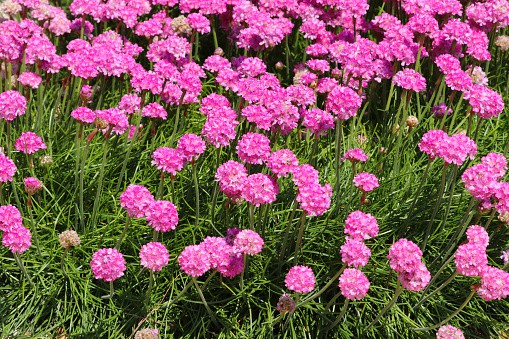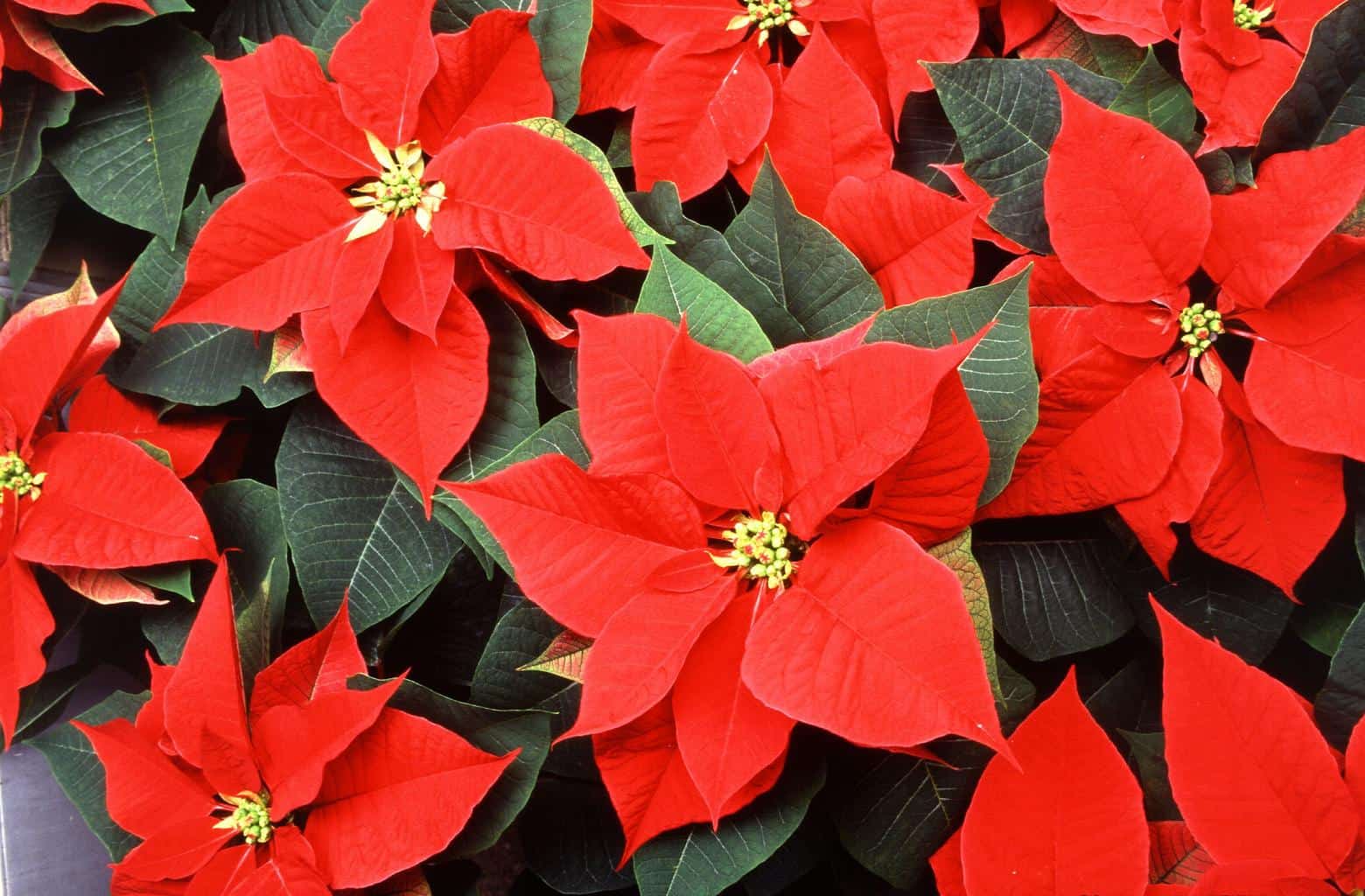Sea Thrift, known also by its scientific name Armeria Maritima, is an evergreen perennial flower which is native to Great Britain. The plant became popular in Britain in the mid 20th century, and was even featured on the reverse of the British threepence – a coin which circulated in Britain between 1937 and 1971. Sea Thrift is an easy to care for flower that produces compact foliage, with slender stems that carry round clusters of pink, lavender, and white colored flowers. These flowers tend to bloom in late spring, and provide sporadic blooms in the summer if regularly deadheaded and cared for.
Sea Thrifts typically require full sun and infertile soil in order to thrive and look their best. The plant holds a number of special meanings in religious and cultural traditions, and its unique name interestingly comes from the Latin word “armarium,” which translates to “armour chest” in English. This is because the flower’s cylindrical foliage was often used to make protective covers in olden times. Even today, Sea Thrift is popular to grow when someone wants to introduce a bit of color, lightness, and playfulness to their garden or living space.
Family and Plant Type
Sea Thrift, or Armeria Maritima, belongs to the plant family known as Plumbaginaceae. The plant holds the designation of being a perennial, meaning that it can regenerate every year provided that it is taken proper care of.
Mature Size
When situated in a good growing environment, Sea Thrift plants tend to reach up to a height of 0.3m and a width of 0.3m, placing it in the low growing perennial flower group. In addition, the flowers tend to be clustered into comb-like formations, with each cluster standing at 1-2 inches in length.
Sun Exposure
Sea Thrift flowers tend to do best when provided with full sun exposure. While some varieties may be able to survive in partial shade too, these will not produce as many flowers, or not as vivid or vibrant in color. When grown outdoors, they should be placed in a location which will remain undisturbed, as if they are moved during the growing season they may take quite long to adjust to the new conditions and start growing again.
Soil Type and Soil pH
To properly thrive, Sea Thrift plants require a light soil which is non-clay based, with a low pH level of 6.0 or lower. The soil should also have good drainage, with a light texture suitable for root development, and plenty of nutrients for providing the plant with enough sustenance. The plant can also be grown in a pot, in which case the ideal medium would be a combination between a medium-grade peat moss and perlite or vermiculite.
Bloom Time
Sea Thrifts typically bloom from late spring throughout the summer season, bringing life and plenty of color to any garden or space when in full bloom. While most flower varieties bloom in profusion for only one season, if regularly deadheaded and tended to, Sea Thrifts can give intermittent flowering throughout the growing season.
Flower Color
Sea Thrifts tend to have flowers that bloom in a variety of colors ranging from pink to lavender and white. Depending on the variety, some may also produce flowers of a redish color or a different color mix which combines two or more colors. The petals also tend to be striped or flecked with minute dots of yellow, making each bloom look unique.
Hardiness Zones
Sea Thrift is versatile enough to cope with different climates. However, it typically performs better in those with warm summers and mild winters. Focusing on the United States, Sea Thrift can be grown outside in USDA Hardiness Zones 4 through 10.
Native Area
Sea Thrift tends to originate from the British Isles and northern regions of Europe, where it can commonly be found in dune grasslands, seashores and coastal habitats. The mild climate of the British Isles is partially responsible for the plentiful growth of this species.
How to Plant?
Sea Thrift is a low maintenance flower suitable for both outdoor and indoor potting. To plant outdoor, simply select a sunny patch that enjoys well-draining soil, then prepare the ground by clearing any large rocks, stones, stumps or weeds. Ensure the top soil is loosened, and dig a hole for the plant that’s about twice as wide as its original container, making sure the hole is deep enough for the roots to be fully covered with soil. Now place the plant in the hole and fill it back up with soil, firmly pressing it down around the base of the plant. Water thoroughly and then Mulch to protect the roots in winter.
For potted plants, select a pot that’s just slightly bigger than the last one, using something made of organic material such as terracotta. A potting mix such as a combination of medium-grade peat moss and perlite or vermiculite works best, as the soil needs to be light and well-draining. As with other perennials, water the plant thoroughly when potting and fertilize with a balanced, water-soluble fertilizer once a month.
Meaning and Symbolism
Sea Thrift is mentioned in religious and cultural traditions for its special meanings. This flower is said to symbolize positive energy, endurance, courage, loyalty, and good fortunes. Additionally, the unique name of Sea Thrift comes from the Latin word “armarium”, which translates to “armour chest” in English. This is because the flower’s cylindrical foliage was often used to make protective covers for chests in olden times.
History, Mythology and Religious Significance
Sea Thrift has a rich history of being used in religious and mythological symbolism. In traditional Celtic symbolism, it was said that the Sea Thrift flower symbolizes meaningful connections between individuals as well as between mother and child. The Ancient Greeks believed it was a symbol of courage, while the Ancient Celts believed it to represent feminine energy, strength and honesty. In Christianity, the flower is said to symbolize hope and fidelity, a concept featured in several religious scriptures.
Flower Varieties and Their Defining Characteristics
The Sea Thrift is an evergreen perennial flower that comes in a variety of colors and sizes. The most commonly available varieties include Sea Pearl and Charles McCann, both which produce pink and white cylindrical flowers and have a mature height between 6 to 10 inches. Mountain Mist and Splendens are two varieties that are taller, reaching lengths of 14 to 18 inches, with Splendens blooming in soft violet colors. Lastly, there’s the Vindictive variety which grows much shorter, only reaching up 8 to 10 inches in height and its flowers bloom in colors of magenta and white.
How to Pot and Repot?
When potting or repotting Sea Thrift, it is important to use a pot that is just slightly bigger than the previous one. This is because the plant requires a light soil which allows plenty of oxygen to the roots, and a pot that is too big may not be able to hold onto enough water to properly nurture the plant. For repotting, carefully remove the Sea Thrift from the old pot, removing as much soil as possible from the roots. Cut back some of the foliage to ensure ease of potting and lighten the root system. Now, place the flower carefully into the new pot and immediately water it in order to allow free-draining of the soil. Fertilize the plant with a balanced water-soluble fertilizer once a month.
How to Prune?
When pruning Sea Thrift, simply use scissors or pruners to trim the plant back to a size of your liking. Trimming back unruly and dead stems will help maintain the plant’s growth, as well as providing it with a neat and orderly look. What’s more, regular pruning can also encourage new and more vibrant foliage to grow and provide the plant with blooms throughout the summer season.
How to Propagate?
Propagation of Sea Thrift is performed through division – a method which involves separating a single, established plant into 2 or more separate plants. In order to do this, wait until the plant is dormant and has a well-established root system. Then, dig out the plant with a small hand-held spade and carefully separate each clump of the plant, making sure to leave each with a healthy root system. Place each separated clump into its own pot, covering it with soil, and water thoroughly. Then, keep the newly separated plants in a cool sheltered spot and wait for them to become established.
Common Pests and Diseases
As with most other plants, Sea Thrifts may also fall prey to certain pests and diseases if care and attention is not given. Common pests include aphids, which can cause deformed leaves, and black vine weevils, which can cause leaves to appear gnawed feeding on the roots. Diseases include powdery mildews, which cause a powdery white coating on the leaves, and can eventually lead to the foliage dying off. The best way to avoid having to deal with any of these pests and diseases is to ensure that the plant’s growing conditions are optimal, with ample sunshine, adequate water and good air circulation.
Three Frequently Asked Questions about Armeria Maritima
Q1: How often should I water my Sea Thrift?
A1: Sea Thrift should be watered regularly, providing it with just enough to keep the soil moist but not sodden. The plant may need more water if placed in a particularly hot spot.
Q2: Can Sea Thrift be grown indoors?
A2: Yes, Sea Thrift can be grown indoors, placed in full sun and provided with plenty of water to keep the soil moist.
Q3: Is it necessary to fertilize Sea Thrift?
A3: While not absolutely necessary, Sea Thrift plants generally benefit significantly from being fed a balanced, water-soluble fertilizer once a month. This will help the flowers to reach their fullest potential and ensure the continuous production of new blooms throughout the season.
Table Fact Sheet
| Name | Armeria Maritima |
|---|---|
| Family | Plumbaginaceae |
| Plant Type | Perennial |
| Mature Size | 0.3m x 0.3m |
| Sun Exposure | Full sun |
| Soil Type | Light non-clay based soil |
| Soil pH | 6.0 or lower |
| Bloom Time | Late spring to early summer |
| Flower Color | Pink, lavender, white, and redish flowers |
| Hardiness Zones | 4 – 10 (USDA) |
| Native Area | British Isles, Northern Europe |
What we love from Amazon this week
Buy these wonderful flowers directly from Amazon:















